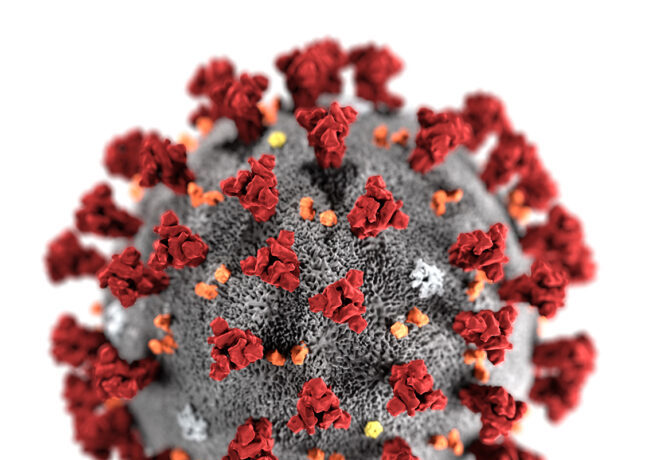The threat of a possible fourth wave of coronavirus looms large as the cases of the Omicron variant of coronavirus rising across the globe. Owing to the Omicron-fuelled wave of infections, countries like New Zealand, South Korea, Germany, and Austria have recorded their highest single-day infection counts this month. Despite that, India has resumed regular overseas flights and has decided to lift containment restrictions (except facial masks and social distancing) this month. Last week, the Ministry of Home Affairs (MHA) had announced that all existing COVID restrictions will be removed on March 31.
In a communication to the chief secretaries of all states, Union Home Secretary Ajay Bhalla said that over the last 24 months, significant capacities have been developed for various aspects of management of the pandemic, such as diagnostics, surveillance, contact tracing, treatment, vaccination, hospital infrastructure. “Also, the general public now has a much higher level of awareness of COVID-appropriate behavior”, he said. The states and Union Territories have also developed their own capacities and systems and implemented their detailed specific plans for managing the pandemic, he stated further, adding over the last seven weeks or so there has been a steep decline in the number of cases.
Several Countries Register Record-Breaking Surge in March
France: French health authorities said that the number of patients hospitalised for Covid over the past 24 hours has jumped by 467 to 21,073. This is said to be the highest daily rise in Covid-19 hospitalisation in France since February 1.
South Korea: South Korea’s new daily COVID-19 cases climbed to nearly 350,000 Tuesday. The country added 347,554 new coronavirus infections, including 41 cases from overseas, bringing the total caseload to 12,350,428, the Korea Disease Control and Prevention Agency (KDCA) said.
China: A nine-day lockdown was imposed in Shanghai, China’s largest city amid a Covid-19 resurgence. From 5 a.m. March 28 to 5 a.m. April 1, temporary closed-off management will be enforced in regions lying to the east and south of the Huangpu River, including Pudong and its adjacent areas, to carry out nucleic acid testing, Xinhua news agency quoted the city’s Covid-19 prevention and control office as saying. Then from 3 a.m. on April 1 to 3 a.m. on April 5, similar temporary closed-off management and testing will be launched mainly in urban districts west of the Huangpu River. The office said the measure is taken to curb the virus spread, protect people’s life and health, and achieve the dynamic zero-Covid target as soon as possible.
New Zealand: Last week, New Zealand had reported 20,907 new community cases of COVID-19. Among the new community infections, 4,291 were in the largest city Auckland. The rest of the cases were identified across the nation, including 3,488 in Canterbury, according to the health ministry.
Italy: Amid the Omicron driven surge, Italy recorded more than 90,000 cases in 48 hours. Italy reported 30,710 Covid-19 related cases on Monday, against 59,555 the day before, Reuters reported quoting the country’s health ministry.
Why Cases Are Rising in Asia, Europe?
The World Health Organisation has said that the BA.2 sub-variant also referred to as “stealth” Omicron has emerged as the dominant strain around the world. The WHO reported that the BA.2 is driving a fresh surge of coronavirus cases in many countries including the UK, the US, China, Hong Kong, South Korea, among others.
Globally, BA.2 made up about 86 per cent of cases reported as updated on the open access database GISAID between February 16 and March 17, the agency said in a report this week. During the same period, BA.1.1 represented about 9 per cent, BA.1 about 5 per cent and BA.3 less than 1 per cent.
BA.2 is already dominant in the WHO’s Americas region and its share of cases has been steadily increasing in several countries of Africa, Asia, Europe, and the Middle East since the end of 2021, the agency said. In the US, about a third of new coronavirus cases are BA.2, Dr Rochelle Walensky, the director of the Centers for Disease Control and Prevention, said at a White House briefing on Wednesday.
US health officials, including the top infectious disease expert Dr. Anthony Fauci, expect the US to soon see an uptick in cases due to the BA.2 subvariant of Omicron. Fauci said that the BA.2 subvariant is estimated to account for about 25 or 30 per cent of new cases in the US, and could also become the most dominant variant in the country, CNBC reported. While he said he expects a rise in cases, it will not necessarily result in a massive surge like other variants have caused.
Is India Prepared to Tackle Another Wave?
Addressing a press conference, Dr VK Paul recently stated that India is prepared for another possible wave as a large section of the population is both naturally immunised as well has received both doses of Covid vaccines.
Besides, eminent Virologist and Former Professor, Christian Medical College (CMC )Vellore Dr T Jacob John predicted that the chances of the fourth COVID-19 wave are low unless another variant erupts. “There is no scientific, epidemiological reason to predict a fourth COVID-19 wave but nobody can predict that it will not happen. I can say the probability is extremely low but it is important to be vigilant and cautious,” said John
“There is a need to keep looking at the viruses and their genetic sequences and see if there are any new variants appearing and if any variants are overtaking Omicron locally in more places,” he added.





